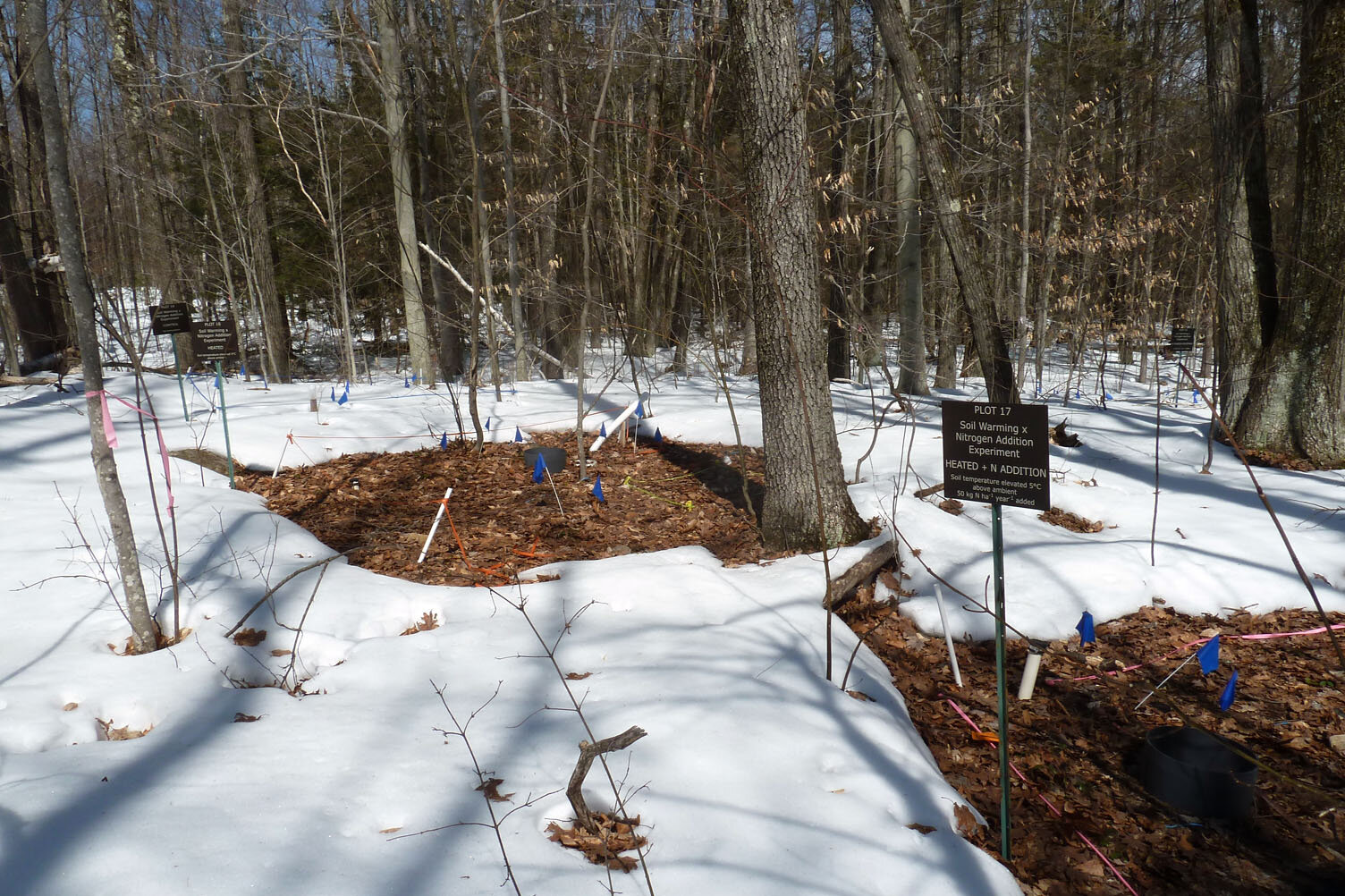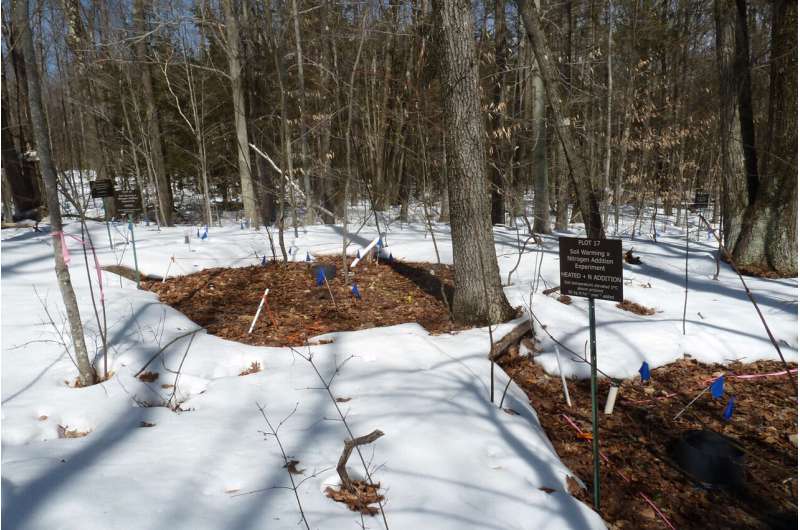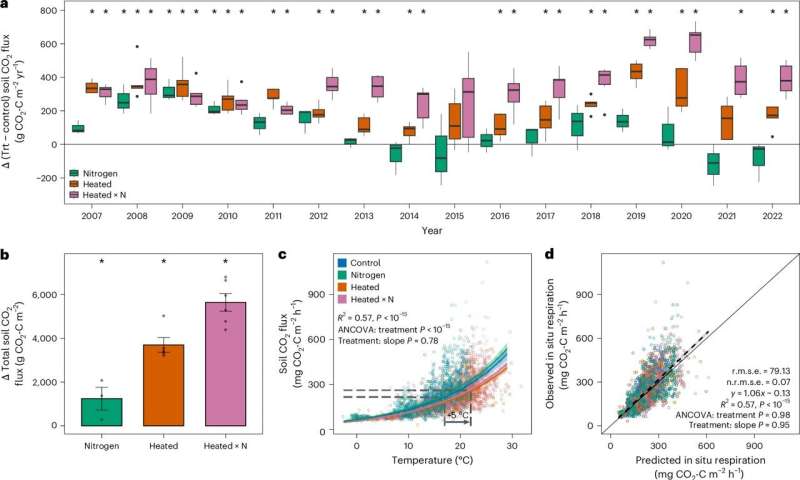

New England’s forests confront multiple environmental challenges like rising temperatures due to climate change and increased atmospheric nitrogen deposits from burning fossil fuels. Scientists have previously studied the impact of both independently, but for the first time, researchers at the University of New Hampshire looked at the effects of the two together.
They found that when warmer temperatures and increased nitrogen levels were combined in soil, carbon storage remained stable due to increased belowground plant inputs from roots, challenging earlier studies and suggesting that the loss of soil carbon in Northeastern forests impacted by climate change may be lower than previously predicted.
“What is most exciting about this study is that it’s one of the longest-running experiments to look at two global change pressures instead of just focusing on one,” said Melissa Knorr, a lab research supervisor in UNH’s College of Life Sciences and Agriculture.
“This is particularly important to study in the Northeast, where the region has experienced greater nitrogen deposition historically, and now faster warming than in other parts of the country.”
The study, published in Nature Ecology & Evolution, outlines how the study led Knorr and Serita Frey, a professor in the department of natural resources and the environment, used data from a 16-year study at the Harvard Forest Long-Term Ecological Research site in Massachusetts to examine this carbon dynamic. They exposed soil at the site to continuous warming of 5°C and nitrogen fertilization of five grams per square meter per year.
Previous work at the Harvard Forest site documented that soil warming alone leads to significant carbon loss in forests, whereas long-term soil nitrogen enrichment results in carbon buildup.

“Plants, particularly through root turnover—the natural process where plant roots grow, die and decompose—and increased plant growth and activity, add new carbon to the soil,” said Frey, also a scientist with UNH’s New Hampshire Agricultural Experiment Station.
“And while microbial activity breaks down organic matter, releasing CO₂, we observed that enhanced plant carbon inputs belowground—caused by warmer temperatures and increased nitrogen—help maintain soil carbon levels, counteracting what would otherwise have been a significant net loss of carbon from the soil.”
Over the past century, New England’s average temperature has risen by 1.7°F. While research shows that rates of nitrogen deposition are declining in the region, they are still five to six times higher than pre-industrial levels. This excess nitrogen, deposited onto ecosystems through rain and snowfall, can harm forests by damaging plant health and acidifying waterways.
Researchers say the findings of this study highlight the importance of plant-soil interactions in forest ecosystems and how these processes could be key to managing forests and ensuring that they continue to act as carbon sinks by absorbing CO₂ and reducing its concentration in the atmosphere.
“By challenging previous predictions from studies that looked at only one factor alone, this research offers a fuller picture of how ecosystems respond to multiple stressors and forests’ role in combating climate change,” said Knorr. “The study offers insights that could inform conservation strategies to enhance carbon sequestration and preserve forest health across the Northeast.”
Co-authors include Alexandra Contosta, Eric Morrison and Thomas Muratore, all with UNH; Mark Anthony, University of Vienna; Kevin Geyer, Allegheny College; Luliana Stoica and Myrna Simpson both from the University of Toronto Scarborough.
More information:
Melissa A. Knorr et al, Unexpected sustained soil carbon flux in response to simultaneous warming and nitrogen enrichment compared with single factors alone, Nature Ecology & Evolution (2024). DOI: 10.1038/s41559-024-02546-x
Provided by
University of New Hampshire
Citation:
New research reveals climate change impact on Northeastern forests may be lower than expected (2024, September 25)
retrieved 25 September 2024
from https://phys.org/news/2024-09-reveals-climate-impact-northeastern-forests.html
This document is subject to copyright. Apart from any fair dealing for the purpose of private study or research, no
part may be reproduced without the written permission. The content is provided for information purposes only.